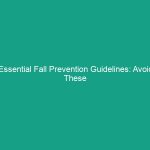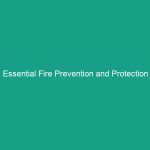Introduction
Good morning team! Today, we’ll dive into a topic that impacts each of us in our daily work: recordable injuries. Understanding what these injuries are, why they matter, and how they affect our Workplace Safety is crucial for all of us. This Toolbox Talk aims to shed light on the significance of recordable injuries and provide insights that can help us all prioritize Safety.
So, why is this topic important? Recordable injuries not only affect individual employees but can also impact our entire team’s morale, productivity, and our organization’s reputation. By understanding and addressing these injuries, we can foster a safer work Environment for everyone.
Understanding Recordable Injuries
A recordable injury is defined as any work-related injury or illness that meets certain criteria set by regulatory bodies, such as OSHA (Occupational Safety and Health Administration). These injuries often require medical treatment beyond first aid, result in days away from work, or involve a significant change in job duties.
It’s essential for us to recognize the impact of recordable injuries on our daily operations. When an injury occurs, it can lead to lost time, decreased productivity, and increased insurance costs. Additionally, it creates an environment of fear and uncertainty among employees.
One common misconception is that only severe injuries are recordable. In reality, even minor injuries that require medical attention can be classified as recordable. This is why it’s important for all of us to report any injury, no matter how minor it may seem.
Key Hazards, Risks, and Safety Considerations
Let’s discuss some of the specific Hazards and risks associated with recordable injuries:
- Slips, Trips, and Falls: One of the most common causes of recordable injuries in the workplace. They can happen anywhere, from the office floor to the construction site.
- Overexertion: Lifting heavy objects or repetitive motions can lead to strains and sprains, which are often recordable injuries.
- Equipment-related Injuries: Improper use of machinery or tools can result in serious injuries that require medical attention.
Ignoring safety protocols can lead to real-world consequences, including prolonged recovery times, increased insurance premiums, and even legal repercussions for our organization. It’s not just about compliance; it’s about protecting our teammates and ourselves.
Best Practices, Procedures, & Actionable Advice
Now that we understand the hazards, let’s talk about the Best Practices to prevent recordable injuries:
- Proper Training: Ensure that all employees are adequately trained in safety Procedures and the correct use of equipment.
- Report Injuries Promptly: Always report any injuries immediately, no matter how minor. This helps us track incidents and improve Safety Measures.
- Utilize Safety Gear: Always wear appropriate Personal Protective Equipment (PPE) designed for your specific tasks.
- Maintain a Clean Workspace: Keep work areas free of clutter to reduce the risk of slips and falls.
Consider a recent incident where an employee ignored a small cut on their hand. They didn’t report it, thinking it was no big deal. However, the wound became infected, leading to a recordable injury that kept them off work for weeks. This highlights the importance of reporting even minor injuries.
Regulations, Standards, and Compliance
As employees, it’s essential to be aware of the Regulations surrounding recordable injuries. osha has specific guidelines that outline what constitutes a recordable injury. Adhering to these regulations not only keeps us compliant but also ensures a safer workplace for everyone.
Compliance is critical because it protects us as employees. By following safety Standards, we reduce the likelihood of injuries and create a culture of safety. Moreover, non-compliance can lead to fines and penalties, which ultimately affect our workplace environment.
Employee Engagement & Discussion
Now, let’s take a moment to reflect on our own experiences. I’d like to ask you:
- What safety challenges have you encountered related to recordable injuries?
- Have you ever witnessed a near-miss that could have led to a recordable injury?
- What suggestions do you have for improving our safety practices?
Your thoughts and experiences are valuable in creating a safer work environment. Let’s discuss these points openly.
Conclusion & Key Takeaways
In summary, understanding recordable injuries is vital for our Workplace Safety. We’ve covered what recordable injuries are, the hazards that contribute to them, best practices to prevent them, and the importance of regulations and compliance.
Remember, safety is a shared responsibility. By being proactive and prioritizing safety, we can reduce the occurrence of recordable injuries and foster a healthier work environment for everyone.
Thank you all for your attention and commitment to safety. Let’s continue to work together to keep our workplace safe and secure!


